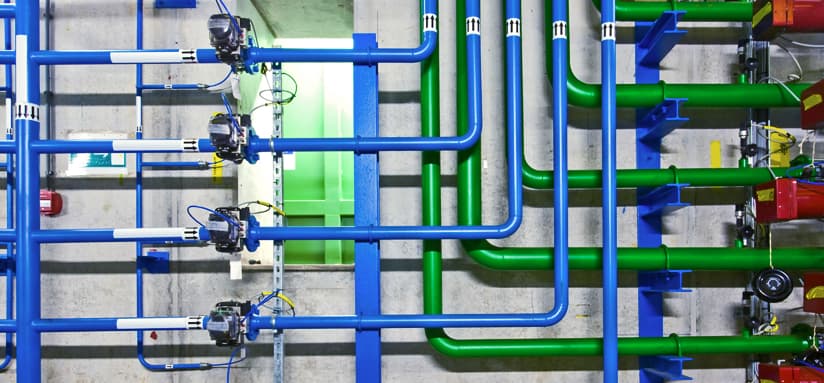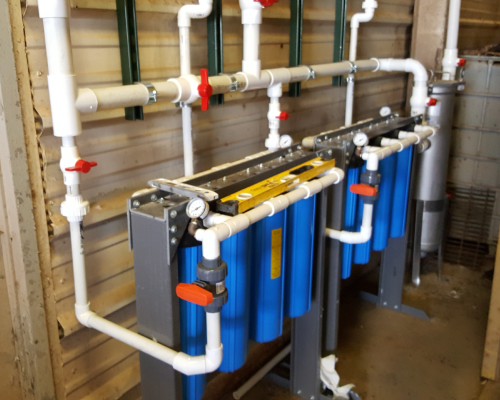How do you actually feel about Understanding Your Home's Plumbing Anatomy?

Recognizing exactly how your home's plumbing system works is crucial for each house owner. From supplying tidy water for alcohol consumption, food preparation, and showering to safely removing wastewater, a well-maintained plumbing system is essential for your household's health and wellness and comfort. In this comprehensive guide, we'll discover the detailed network that makes up your home's pipes and deal ideas on upkeep, upgrades, and taking care of common issues.
Introduction
Your home's pipes system is greater than just a network of pipelines; it's an intricate system that ensures you have access to tidy water and effective wastewater removal. Understanding its components and how they work together can aid you stop expensive repair work and make sure whatever runs smoothly.
Standard Parts of a Plumbing System
Pipelines and Tubes
At the heart of your pipes system are the pipes and tubing that lug water throughout your home. These can be made from various materials such as copper, PVC, or PEX, each with its benefits in terms of resilience and cost-effectiveness.
Fixtures: Sinks, Toilets, Showers, and so on.
Fixtures like sinks, toilets, showers, and bath tubs are where water is used in your house. Comprehending how these fixtures attach to the pipes system assists in identifying problems and planning upgrades.
Shutoffs and Shut-off Points
Shutoffs regulate the flow of water in your pipes system. Shut-off valves are crucial during emergencies or when you need to make repair work, allowing you to separate parts of the system without interrupting water circulation to the whole residence.
Water System
Main Water Line
The major water line attaches your home to the local water or an exclusive well. It's where water enters your home and is dispersed to various fixtures.
Water Meter and Pressure Regulator
The water meter measures your water usage, while a stress regulator ensures that water moves at a risk-free pressure throughout your home's pipes system, avoiding damages to pipelines and fixtures.
Cold Water vs. Hot Water Lines
Recognizing the distinction in between cold water lines, which provide water directly from the primary, and warm water lines, which lug heated water from the water heater, aids in troubleshooting and preparing for upgrades.
Water drainage System
Drain Pipeline and Traps
Drain pipes lug wastewater away from sinks, showers, and bathrooms to the drain or septic system. Traps avoid drain gases from entering your home and additionally trap particles that can create blockages.
Air flow Pipelines
Air flow pipelines permit air into the drainage system, stopping suction that might reduce water drainage and cause traps to vacant. Correct air flow is important for preserving the stability of your pipes system.
Importance of Proper Drainage
Guaranteeing proper drain avoids back-ups and water damages. Consistently cleaning drains pipes and keeping catches can protect against costly repairs and extend the life of your plumbing system.
Water Heating System
Types of Hot Water Heater
Hot water heater can be tankless or traditional tank-style. Tankless heating systems warmth water as needed, while storage tanks keep heated water for immediate use.
Exactly How Water Heaters Connect to the Plumbing System
Recognizing just how hot water heater link to both the cold water supply and warm water distribution lines helps in detecting issues like insufficient warm water or leaks.
Upkeep Tips for Water Heaters
Consistently flushing your hot water heater to get rid of sediment, checking the temperature level settings, and examining for leaks can expand its life-span and enhance power efficiency.
Typical Plumbing Concerns
Leakages and Their Causes
Leakages can happen due to maturing pipes, loosened installations, or high water pressure. Resolving leakages immediately avoids water damages and mold growth.
Obstructions and Obstructions
Obstructions in drains pipes and bathrooms are frequently brought on by purging non-flushable items or a build-up of grease and hair. Using drainpipe screens and bearing in mind what goes down your drains pipes can avoid obstructions.
Indicators of Plumbing Troubles to Watch For
Low tide pressure, sluggish drains, foul odors, or abnormally high water expenses are indicators of prospective pipes issues that need to be attended to quickly.
Pipes Maintenance Tips
Normal Evaluations and Checks
Set up annual plumbing examinations to capture issues early. Try to find indicators of leaks, deterioration, or mineral buildup in faucets and showerheads.
DIY Upkeep Tasks
Straightforward tasks like cleansing tap aerators, checking for bathroom leaks utilizing color tablet computers, or insulating subjected pipelines in cold environments can prevent major pipes concerns.
When to Call a Professional Plumbing Professional
Know when a plumbing problem calls for professional know-how. Trying complex repair work without correct knowledge can bring about even more damage and higher repair work prices.
Updating Your Pipes System
Reasons for Updating
Updating to water-efficient components or changing old pipelines can improve water quality, lower water expenses, and raise the worth of your home.
Modern Plumbing Technologies and Their Benefits
Check out modern technologies like smart leak detectors, water-saving commodes, and energy-efficient water heaters that can save cash and reduce environmental impact.
Expense Considerations and ROI
Determine the in advance prices versus lasting savings when thinking about pipes upgrades. Numerous upgrades pay for themselves with reduced utility bills and less fixings.
Environmental Influence and Conservation
Water-Saving Fixtures and Appliances
Setting up low-flow faucets, showerheads, and toilets can considerably decrease water usage without sacrificing performance.
Tips for Decreasing Water Usage
Easy practices like fixing leaks without delay, taking much shorter showers, and running complete tons of laundry and dishes can conserve water and reduced your energy expenses.
Eco-Friendly Pipes Options
Think about sustainable plumbing products like bamboo for flooring, which is durable and environment-friendly, or recycled glass for counter tops.
Emergency situation Preparedness
Steps to Take Throughout a Pipes Emergency
Know where your shut-off shutoffs lie and just how to switch off the water system in case of a burst pipeline or significant leak.
Relevance of Having Emergency Situation Calls Helpful
Keep call info for local plumbers or emergency situation solutions easily offered for quick response throughout a plumbing situation.
DIY Emergency Situation Fixes (When Suitable).
Short-term solutions like utilizing duct tape to spot a dripping pipeline or putting a container under a leaking faucet can decrease damage till an expert plumbing gets here.
Final thought.
Recognizing the composition of your home's pipes system empowers you to preserve it effectively, conserving time and money on repair services. By complying with normal maintenance routines and remaining informed concerning modern pipes technologies, you can ensure your pipes system operates effectively for several years to come.
HOW YOUR PLUMBING SYSTEM WORKS
Which Pipes Do What?
Blue lines = fresh water supply entering the building
Red lines = hot water supply entering the building
Grey lines = pipes carrying waste away from the building and venting pipes carrying gases away from the building (through the roof)
YOUR MAIN PLUMBING SYSTEMS
There are two main plumbing systems that support your home s basic plumbing needs one that brings clean water into your home, and one that sends dirty water away from your home. Connected to the toilet, bath, shower, and other faucets in your home, these two systems keep your water flowing in the right directions.
ACCESSING FRESH WATER
Fresh and clean water is brought into your home through the main water supply line . Filtered through one pipe, this water is pressured to flow into the various fixtures in your home at any given time.
This water can be sourced from a well located on your property, a pond or river (mostly cottages), or, as in most cases, from the city s municipal water treatment centre. However, it is important to note that water that is untreated, such as the water siphoned from ponds or rivers, may not be safe to drink. Personal water supplies always need to be treated for hardness and contaminants before consumed.
MUNICIPAL WATER SUPPLIES
Improve taste and odour
Remove sediment
Eliminate hardness
Reduce chlorine
COLD WATER SUPPLY VS. HOT WATER SUPPLY
Cold water flows into your home or building through the service line, which then distributes hot or cold water to your fixtures. This line is most commonly run through a central column that runs floor to floor. Hot water runs in short and straight pipes as the longer the pipeline, the more heat that will be lost in the transfer. Having shorter pipes also allows residents to access hot water more quickly.
WASTE WATER SYSTEM
Your wastewater system is divided into two parts pipes that send wastewater away from your home and venting pipes that send sewer gas away from your home. Sewage water travels through pipes that flush the water and waste towards local sewers that are operated and managed by your city or town. Most sewer systems rely on gravity to move the wastewater to where it needs to go.
The further away from your toilet or sink, the larger wastewater pipes become. This allows for waste to be disposed of from various parts of your home or business at once without pipe blockages. The angle and flow of these pipes are also essential for keeping your waste pipes clear of build up.
https://harrisplumbing.ca/how-your-home-plumbing-system-works/

HOW YOUR PLUMBING SYSTEM WORKS
Which Pipes Do What?
YOUR MAIN PLUMBING SYSTEMS
There are two main plumbing systems that support your home s basic plumbing needs one that brings clean water into your home, and one that sends dirty water away from your home. Connected to the toilet, bath, shower, and other faucets in your home, these two systems keep your water flowing in the right directions.
ACCESSING FRESH WATER
Fresh and clean water is brought into your home through the main water supply line . Filtered through one pipe, this water is pressured to flow into the various fixtures in your home at any given time.
This water can be sourced from a well located on your property, a pond or river (mostly cottages), or, as in most cases, from the city s municipal water treatment centre. However, it is important to note that water that is untreated, such as the water siphoned from ponds or rivers, may not be safe to drink. Personal water supplies always need to be treated for hardness and contaminants before consumed.
MUNICIPAL WATER SUPPLIES
COLD WATER SUPPLY VS. HOT WATER SUPPLY
Cold water flows into your home or building through the service line, which then distributes hot or cold water to your fixtures. This line is most commonly run through a central column that runs floor to floor. Hot water runs in short and straight pipes as the longer the pipeline, the more heat that will be lost in the transfer. Having shorter pipes also allows residents to access hot water more quickly.
WASTE WATER SYSTEM
Your wastewater system is divided into two parts pipes that send wastewater away from your home and venting pipes that send sewer gas away from your home. Sewage water travels through pipes that flush the water and waste towards local sewers that are operated and managed by your city or town. Most sewer systems rely on gravity to move the wastewater to where it needs to go.
The further away from your toilet or sink, the larger wastewater pipes become. This allows for waste to be disposed of from various parts of your home or business at once without pipe blockages. The angle and flow of these pipes are also essential for keeping your waste pipes clear of build up.
https://harrisplumbing.ca/how-your-home-plumbing-system-works/
Do you enjoy more info about ? Place a remark below. We will be glad to listen to your suggestions about this piece. We hope that you visit us again before long. Be sure to take the opportunity to share this entry if you enjoyed reading it. Many thanks for your time invested reading it.
Pricing